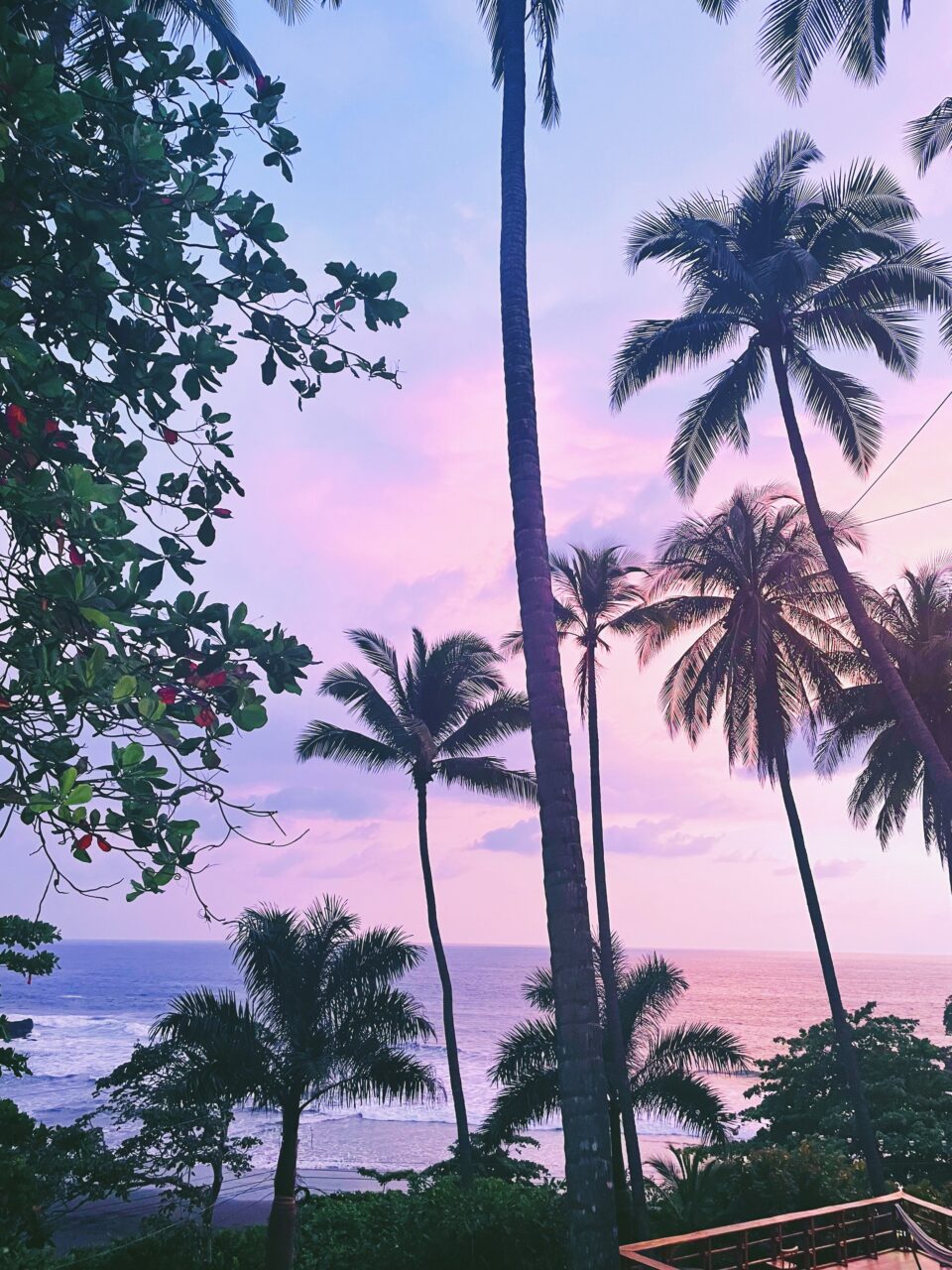Days 0 & 1: Tashkent
Top Things to See in Tashkent
Chorsu Bazaar
This is Tashkent’s largest and most lively bazaar. You can find everything you need here from clothing to spices to home appliances. We spent our time trying delicious national dishes in it’s open-air food hall and going souvenir shopping.
Pro- tip: Uzbekistan has a currency exchange black market, and you can find a lot of money changers in Chorsu. The black market rate tends to be significantly better than the official exchange rate, but be wary of shady practices. To avoid being cheated, make sure the money is counted in front of you before you hand over your cash.


Kukeldash Madrasah
After visiting Chorsu, we took a short walk to the Kukeldash Madrasah, the largest madrasah (Islamic school) and one of the most famous historical monuments of Tashkent.
Minor Mosque
Minor Mosque is one of the newer mosques in Tashkent being opened in 2014. It is known as the White Mosque because of it’s stunning white marble finish.
Khast Imam Square
Khast Imam square also known as, Hast Imom, Hazret Iman, Khazrati Imam and a ton of other variations, is the religious center of Tashkent located in the old town. The Muyi Mubarak Library is in the center of the square and holds one of the oldest Qurans in the world.
Central Asian Plov Center
Plov is Uzbekistan’s national dish and absolute favorite food, consisting of rice, carrots, and meat cooked together. The Central Asian Plov center is the place to try Plov!

Metro
Tashkent’s metro is famous for its extravagant designs comparable to the Moscow Metro Stations. You can probably spend all day riding the metro taking in the beautiful artwork. Some of the most impressive stops include, Chilonzor, Alisher Navoiy, Toshkent, Kosmonavtlar, Ozbekiston and Mustaqilliq Maidoni.

Learn about the best way to travel throughout Uzbekistan and other useful tips for visiting here!
Day 2: Khiva
Khiva is an ancient city and an UNESCO World Heritage Site that is believed to been founded in 5th or 4th centuries BC. It was a crossroad of the Great Silk Road, serving as a pinnacle post connecting two powerful lands, China and Rome. Khiva consists of two parts— Ichan Kala (inner city) and Dishan Kala (outside City). Ichan Kala is surrounded by four gates each facing to the four sides of the world.
The majority of the main attractions are found in Ichan Kala. You can purchase a tourist ticket at the west gate entrance that gives you access to most museums, madrasas, and sites in the city for two days. Some of the biggest attractions require additional payment.
Pro-tip: There’s so much rich history in Khiva! I recommend getting a guide to really bring the sites to life. Also, the museums have limited descriptive information, so you may have a lot of unanswered questions if you don’t get a guide.

Top Things to See in Khiva
Islam-Khodja Complex
This Islam Khodja complex consists of small madrasah and the highest minaret of Khiva. For an unforgettable view of the city, climb the minaret!
Pro tip: There are over 100 steep steps to climb to reach the top of the minaret. We found the best way to climb is by walking sideways.
Juma Mosque
This was one of my favorite sites in Khiva because it is so different from the other attractions. The main chamber has 213 wooden pillars each uniquely craved, some dating back to the 10th century, and is centered around a small garden.
Kunya-Ark Fortress
Located at the Itchan-Kala western gate, the Kunya-Ark fortress was once the home of Khivan Khans (rulers/ military leaders). Its’ watchtower, overlooks the entire city and is another great place to catch a sunset in Khiva.

Beautiful view of Khiva from the Kunya-Ark Fortress
Wood Carver’s Workshop
There are about 300 families living in Itchan Kala and they are mostly engaged in crafts. We visited a wood carver’s workshop to learn about more about the process. Like most workshops in Khiva, it was free to enter and there wasn’t pressure to buy anything.
Pro-tip: If you are on looking for the best deals on wooden goods, don’t purchase from the wood master as they have the most expensive prices. It’s best to purchase from the plethora of vendors lining the streets of Khiva.
Silk Carpet Workshop
Uzbekistan is the 3rd largest silk producer in the world. Prior to visiting a silk carpet workshop, I had no idea of how much effort went into producing a silk carpet. One carpet can take weeks to make by hand and their prices reflect that.
Tash Khauli Palace
Tash Khauli Palace aka the Stone Palace was once the residence of the four queens and royal concubines. Its’ courtyards are intricately decorated in shades of blue. It’s easy to miss this because it appears because on the outside it appears to be a fortress, but make a point to find it.
Kalta-Minor Minoret
This is the largest incomplete minoret in the world. The powder blue minoret was the vision of Mohammad Amin Khan, who wanted to build a minoret high enough where he can see all the way to Bukhara. But he unexpectedly died and the building was never finished. The Kalta Minor is even more stunning at night when it is illuminated with lights.

Days 4 & 5: Bukhara
Another vital point along the Silk Route, Bukhara was once known as one of the most important economic and intellectual hubs of the Persian world. Scholars, poets, and scientists flocked to Bukhara during the 8th, 9th, and 10h centuries. The entire inner city of Bukhara is an UNESCO World Heritage site and is recognized as one of the prime examples of a well preserved Islamic ancient city in Central Asia.

My wonderful guide Faruza and myself. I highly recommend getting a tour guide in Bukhara. Bukhara
Top Things to See in Bukhara
The Po-i Kalan Complex:
One of my favorite sites in Bukhara was the Po-i Kalan complex. This religious complex that includes the Kalan Minaret, the Kalan Mosque, and the Mir-i Arab Madrassah.
Kalyan Minaret
I don’t think I can ever get tired of looking at minarets in Uzbekistan. The Kalyan Minaret is particularly unique because unlike many of the other minarets designed with bright colors, it has sepia walls embellished with intricate brick patterns. When it was built in 1127, the Kalyan Minaret was the tallest building in Central Asia. Genghis Khan was so enamored by the Kalyan Minaret’s beauty, he spared it while his troops destroyed the rest of the city.
Kalon Mosque
At the foot of the Kalyan Minaret is the 16th century-built Kalon Mosque, large enough to hold 10,000 worshippers at a time.
Mir-I-Arab Madrassah
The vibrant blue dome atop the Mir-I-Arab Madrassah is a beautiful contrast to the brown and beige brickwork of its neighboring buildings. Visitors are only typically only allowed into the foyer of the Madrassah to get a peak of the central courtyard through a latticed window.

Shopping
While I shopped in nearly all of the cities I visited, Bukhara was one of the best shopping places because they had the most inexpensive souvenir prices and a better variety of traditionally produced handicrafts. I enjoyed talking to the artisans and learning more about their craft.
What to buy
Susani- Susani means embroidery. You can get susani bags, pillowcases, and table cloths. The thing I love most about susani is that each embroidery represents an unique story.
Ikat Clothing- Ikat is the national fabric of Uzbekistan and is made with beautiful bold colors. You can get a custom made silk or cotton ikat outfit made in 1-3 hours.
Doppi- Traditional Uzbek hat with colorful designs
Silk goods- Being that Uzbekistan is a major producer of silk, they have a huge variety of silk products from paper to scarves to clothing.
Metal goods- On brass and copper items, metal engravers often etch architectural monuments of “Holy Bukhara” and decorative patterns. If you go into a master’s workshop, he will show you his process.
Ceramics- Ceramics is the oldest of the national Uzbek crafts. Each region has it’s own ceramic school. Ceramic tea sets and bowls are popular items.
Bukhara Silk Carpets
Bukhara Silk Carpets is the largest silk rug store in Uzbekistan! A small 100% silk area rug starts at $500, the most expensive rug is $78,000.

Nadir Divan-Begi Madrasah
One of my favorite things to do while traveling is catch a local dance performance. You can learn so much about a culture through how they expressed themselves through art. At the Nadir Divan-Begi Madrasah, you can have dinner and catch a traditional performance accompanied with live music. Uzbek dance is very enchanting and elegant! And the costumes are colorful and richly-detailed.
Day 6: Samarkand
Samarkand is more modern than Khiva and Bukhara, but it still has a little ancient city flair to it.
Top Things to See in Samarkand
Registan
The Registan Square is Samarkand’s center piece and also an UNESCO World Heritage Site. The architectural ensemble consists of three buildings and are truly majestic examples of medieval Islamic architecture. The main building of the ensemble is Tilla-Qori Madrasah, to the left of it is Ulugbek Madrasah, and to the right of it is Sher-Dor Madrasah.
Sharq Taronalari International Music Festival
We had the pleasure of attending the opening ceremony for the Sharq Taronalari, which is the largest musical and cultural festival in Central Asia. This festival is a celebration of art and brings together talented singers, dancers, and musicians from all over the world. The performances are held in the historic Registan which makes the performances even more special.

Shah-i-Zinda
Also known as the Living King Masoleum, Shah-i-Zinda is an old burial site of royal persons and nobles, that has more than 20 buildings. Some of the masoleums date back to the 9th century!
Day 7: Tashkent
Travel back to Tashkent to catch your flight back home or to your next destination. If you have time before catching your flight, go check out the TV Tower or spend more time exploring the different metro stations.
In conclusion, a trip to Uzbekistan is the one of a kind experience everyone deserves. I was blown away by the beautiful architecture, culture, and the genuine warmness of its people.
Disclaimer: I was invited to Uzbekistan by the World Influencers Congress, but all opinions expressed here are my own.
Liked it? Pin it!






